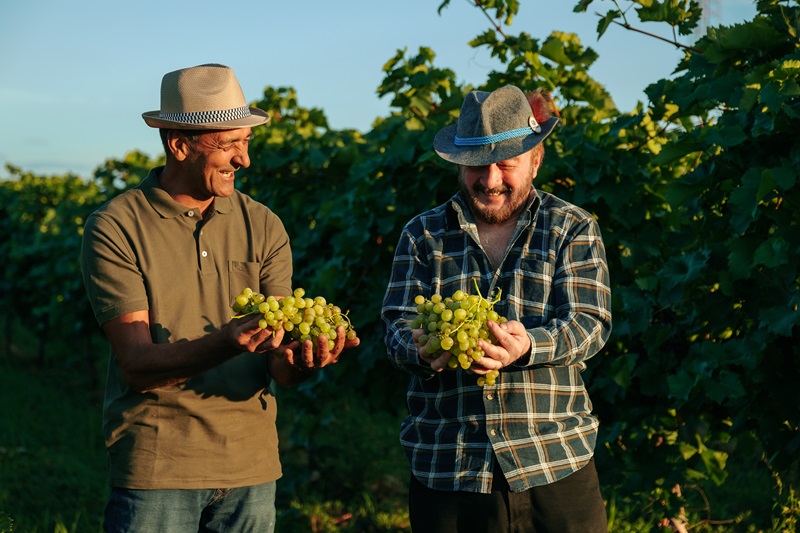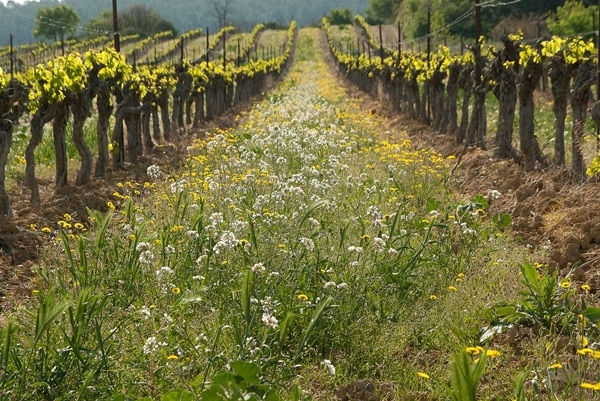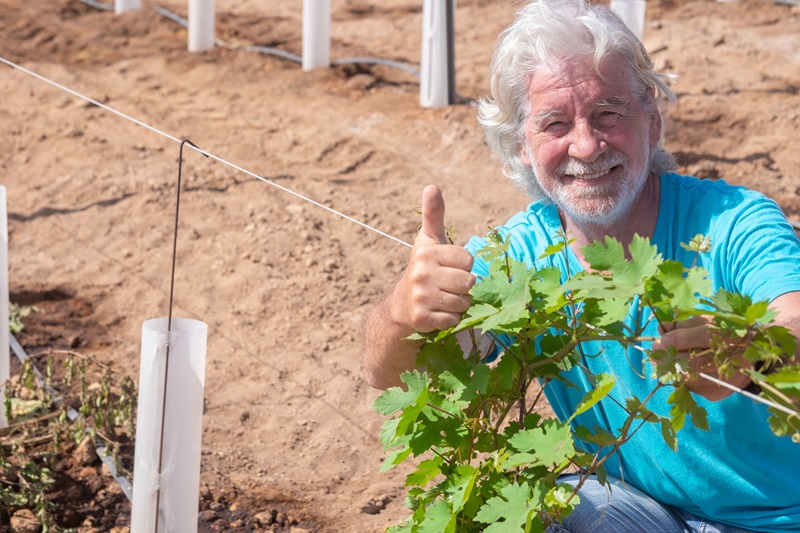
In France, vines are generally planted between February and June, outside periods of frost and heavy rain. However, the exact date can vary depending on a number of factors:
- Regional climate: in cooler climates, it’s best to plant in spring (April-May), when the soil warms up. On the other hand, in warmer regions, autumn planting (February-March) may be considered.
- Soil type: well-drained soils rich in organic matter are ideal for vines. If your soil is heavy or clayey, it’s advisable to plant in spring to allow water to drain properly.
- Vine variety: some varieties are earlier than others and can be planted earlier. Ask your nurseryman which varieties are best suited to your climate and needs.
Here are some practical tips for choosing the best planting period for your vineyard:
- Observe lunar cycles: traditionally, it is recommended to plant vines in the waning moon, as this promotes root growth.
- Check night-time temperatures: late frosts such as spring frosts can damage young plants. Wait until night-time temperatures stabilize above 0°C before planting. Tools such as frost towers are available to combat spring frost and protect vines from frost.
- Examine the condition of the soil: it should be moist enough to facilitate planting, but not soggy.
By following these tips, you’ll choose the ideal time to plant your vine and give it the best chance of flourishing and producing delicious grapes.
Don’t forget that planting is only the first step in vine cultivation. It’s important to provide your plant with attentive care throughout the year, including regular watering, pruning and protection from disease and pests.
With a little patience and love, your vine will delight you for many years to come.
Site preparation before planting

To maximize your chances of success and provide your vines with an environment in which they can flourish, it’s crucial to prepare the ground carefully before planting.
Here are the key steps to follow to prepare the ground optimally:
1. Choose a sunny, well-drained location:
- Vines are heliophilous plants that love the sun. Place it in a spot that gets at least 6 hours of direct sunlight a day.
- Well-drained soil is essential to prevent roots stagnating in water, which could lead to root rot. Choose sandy-loam or clay-loam soil.
- Avoid steep slopes and areas prone to flooding.
2. Deep soil cultivation :
- Spade or plough the soil to a depth of at least 50 cm to loosen the soil and facilitate root development.
- This step is particularly important for heavy or compact soils.
- Incorporate compost or well-decomposed manure to enrich the soil with organic matter and improve its fertility.
3. Apply compost or manure :
- Well-decomposed compost or manure provides essential nutrients for the vine and promotes root growth.
- Spread a generous layer of compost or manure over the soil and mix well.
- Leave the soil to rest for a few weeks before planting the vines, to allow the nutrients to diffuse.
In addition to these essential steps, here are a few additional tips for preparing your land:
- Analyze the soil: a soil test can help you determine the soil pH and identify any nutrient deficiencies.
- Correct soil pH if necessary: vines prefer slightly acidic soil, with an ideal pH of between 6 and 7.
- Remove weeds and stones: they can hinder vine growth.
- Mulch the soil around the plants: mulching will help conserve soil moisture and limit weed growth.
By taking the time to prepare your land properly, you’ll give your vines the best conditions to flourish and produce delicious grapes for many years to come.
Vine planting techniques

It is crucial to choose the planting technique best suited to your plants and your situation.
Here are the three main techniques for planting vines:
1. Bare-root planting :
This is the most traditional and economical technique. It consists in planting vine plants with bare roots, i.e. not surrounded by soil or substrate.
Advantages :
- Affordable plant prices
- Well-developed roots
- Better soil adaptation
Disadvantages :
- Requires rapid planting after seedling purchase
- Roots more fragile and susceptible to drying out
- Less suited to dry climates
Example: Bare-root planting is often used for grafted vine plants, as it allows better graft recovery.
2. Root ball planting :
This technique involves planting vine seedlings whose roots are surrounded by a clod of soil or substrate. The root ball protects the roots and keeps them moist.
Advantages :
- Easier plant handling
- Better root protection
- Adaptation to a wide range of climates
Disadvantages :
- Generally higher plant prices
- Risk of rootball drying out if not properly watered
For example, rootball planting is often used for grapevines grown from cuttings, as it preserves the fragile young roots.
3. Bucket planting :
This technique involves planting vine seedlings that have been grown in individual cups filled with soil or substrate. The plants are well developed and have a strong root system.
Advantages :
- Vigorous, well-rooted plants
- Better recovery after planting
- Suitable for all types of soil
Disadvantages :
- Highest plant price
- Non-biodegradable plastic cups (often)
Example: bucket planting is often used for in vitro-cultured grapevines, as it produces healthy, homogeneous plants.
FAQ
What is the ideal distance between vines?
The ideal distance between vines is a crucial factor in ensuring good fruiting, a quality harvest and optimum grape production. In general, it’s recommended to leave a space of 1.5 to 2 meters between each vine. Here’s a closer look at the importance of this distance and the factors to consider.
Importance of spacing :
- Air circulation: good spacing between vines allows better air circulation. This reduces the risk of plant diseases such as mildew and powdery mildew, which can affect leaves, flowers and fruit.
- Access to light: vines need plenty of light for efficient photosynthesis. Proper spacing ensures that each vine receives sufficient light, which is essential for the production of quality grapes.
- Root and stem development: vine roots and stems need space to develop. A space of 1.5 to 2 meters allows roots to spread without excessive competition for soil nutrients.
How important is the depth of the planting holes?
The depth of planting holes is an essential factor in vine growth and health. It plays a crucial role in root development, plant stability and fruit quality. Here’s a closer look at the importance of planting hole depth and why it must be respected.
Root development
- Strong roots: adequate hole depth enables roots to establish themselves firmly in the soil. Well-developed roots ensure better absorption of nutrients and water, which is essential for stem growth and fruit production.
- disease prevention: planting vines at an appropriate depth helps prevent plant diseases. Well-rooted vines are less likely to be affected by unfavorable conditions such as drought or excess humidity.
Plant stability and growth
- Anchoring: deep planting holes ensure that the vines are well anchored in the soil, giving them the stability they need to withstand strong winds and bad weather.
- Vigorous growth: by providing a stable, nutritious environment, a good planting depth encourages vigorous vine growth. This translates into healthier leaves, abundant flowers and better fruiting.
How to choose the right vine variety?
Choosing the right vine variety is a crucial step in ensuring good grape production and the health of your plants. The choice of variety influences not only fruit quality, but also disease resistance and ability to adapt to the local climate. Here are a few tips to help you make the right choice.
Climatic considerations
- Climate of your region: vines are very sensitive to climate. Some varieties prefer cool climates, while others thrive in warmer regions. For example, table grape varieties like Chasselas are well adapted to temperate climates, while varieties like Syrah prefer warmer climates.
Cultural objectives
- Wine production or table grapes: your choice of variety will depend on the intended use of the fruit. For wine production, varieties such as Merlot, Cabernet Sauvignon or Pinot Noir are ideal. For table grapes, choose varieties such as Muscat or Concord.

